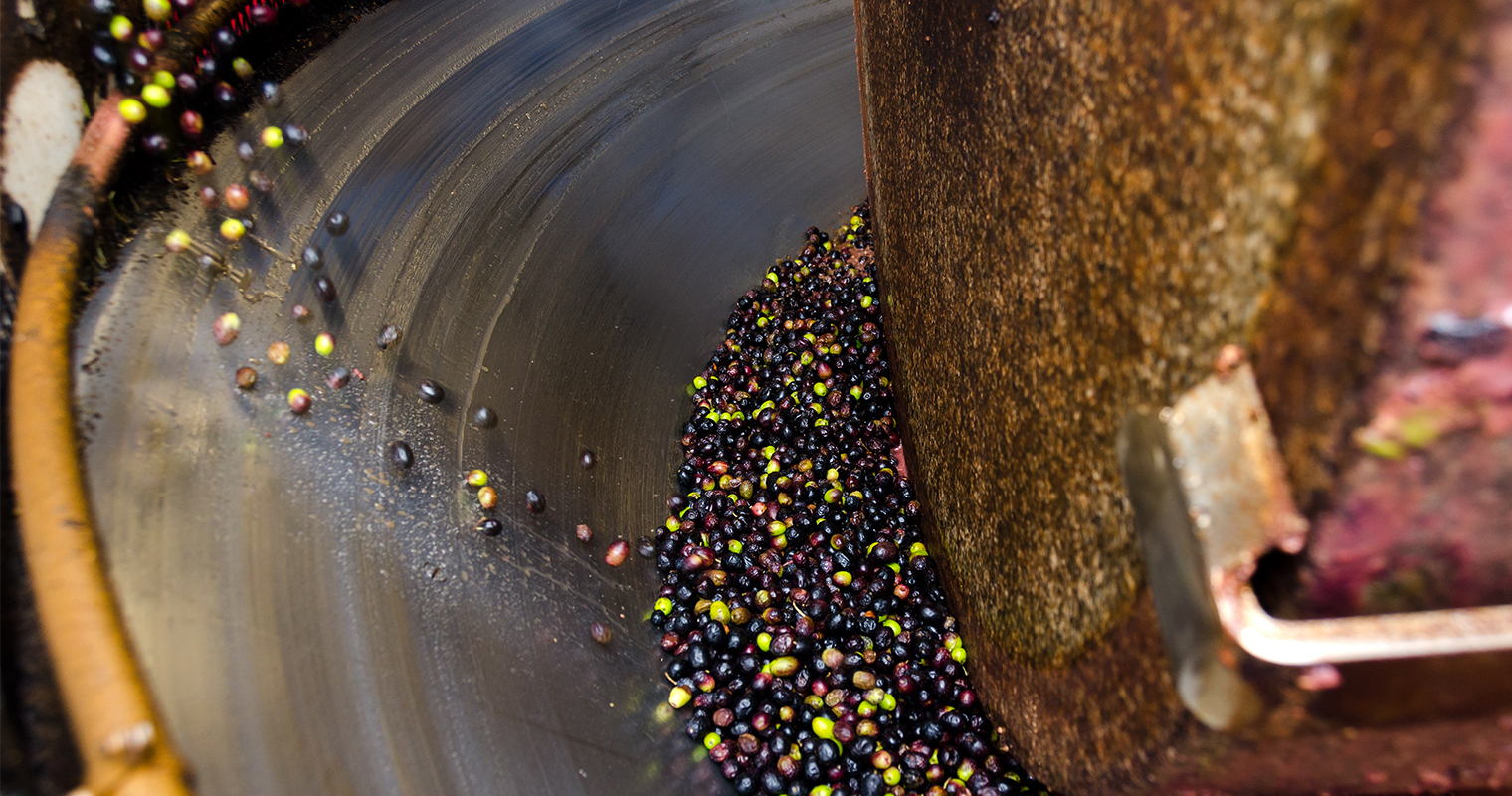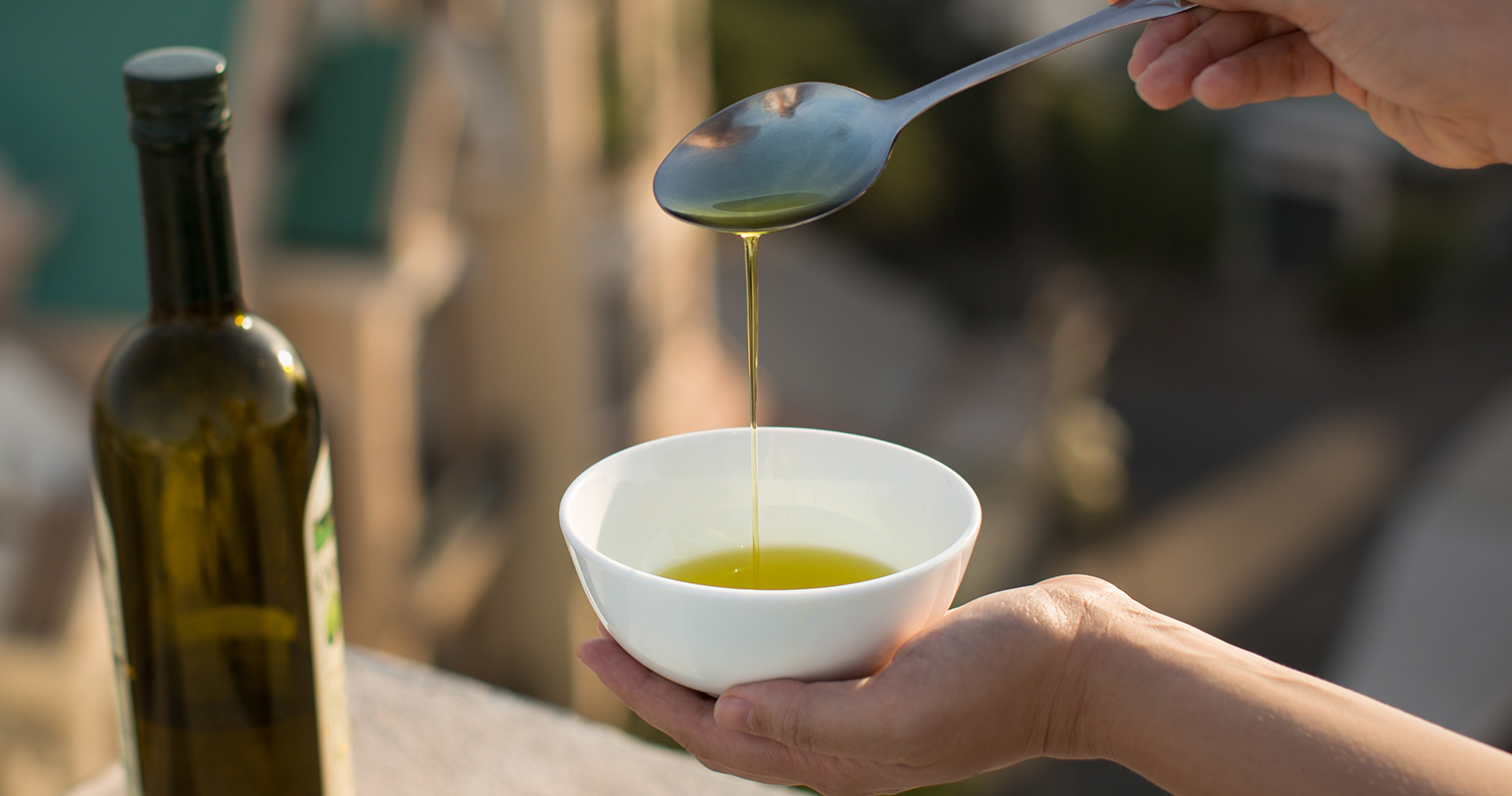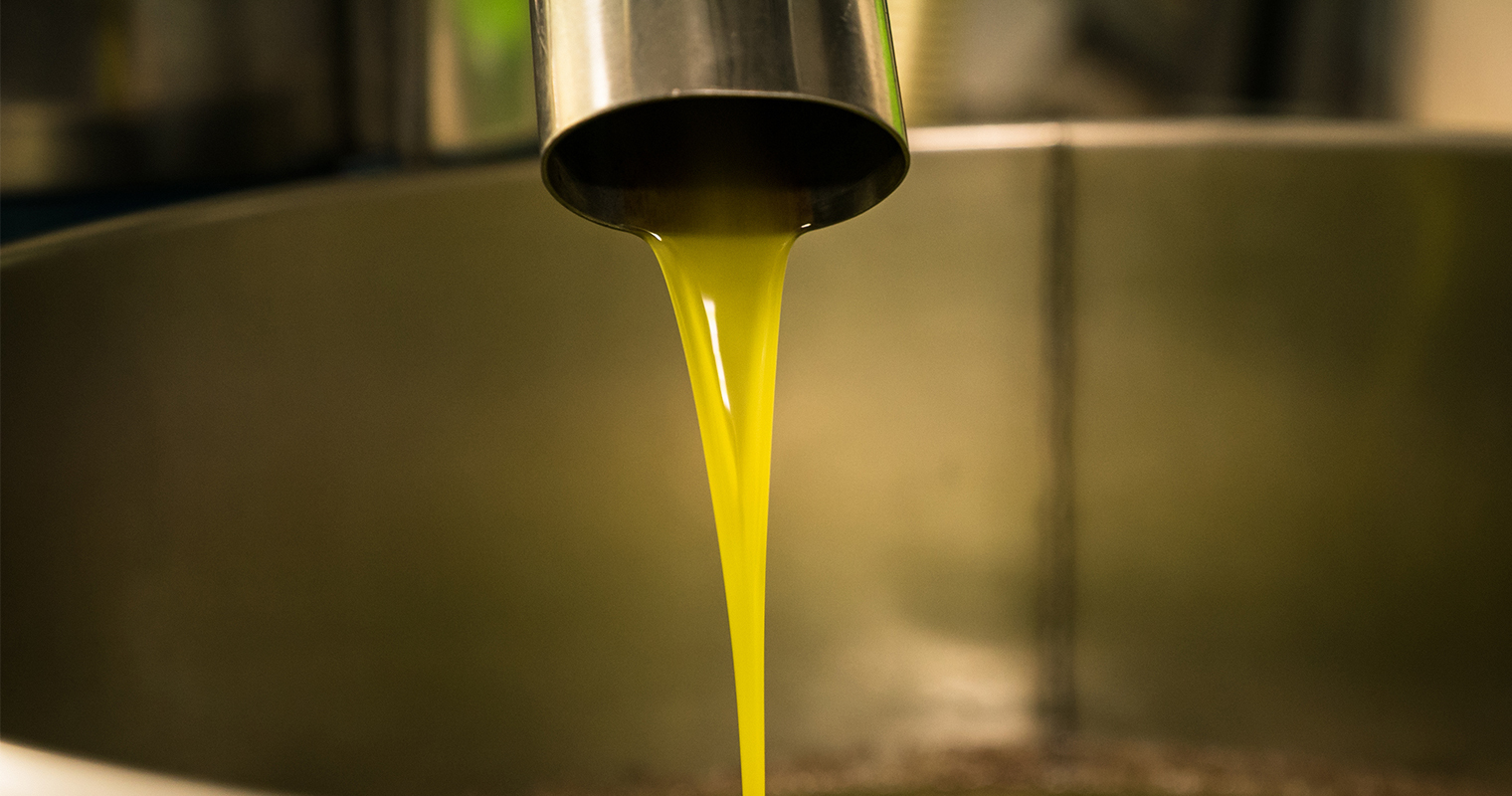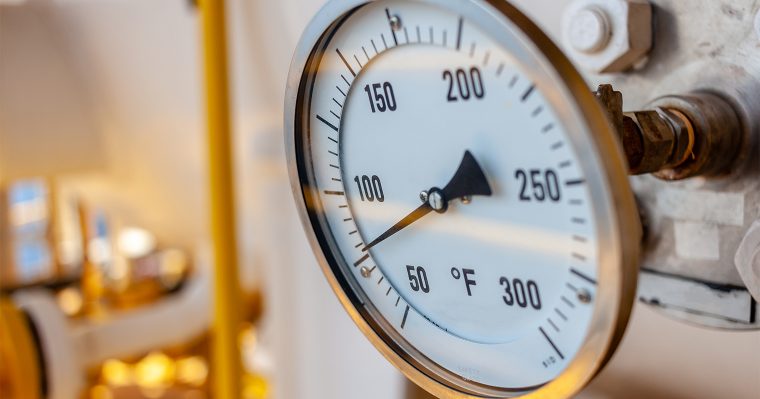Of late, “cold press” juice is trendy. The term “cold press” refers to using only pressure to extract without using heat or chemicals. This method renders minimized impact on the extraction’s consistency by avoiding foreign ingredients or high temperatures. It also retains the aroma, flavor, and nutritional value of the extraction.
Beyond juices, “cold press” had been a longstanding key method to extract high quality oils and ingredients across agricultural history. The top class olive oil and sweet almond oil can only be labelled “extra virgin” when they are extracted “cold press”. Such method ensures that the heat sensitive nutritional ingredient is kept “cold” and not destroyed by heat during extraction. Limiting to “pressing” for extraction also guarantees that no chemical is introduced into the outcome.
Oil extraction through cold press
The cold press method starts with the cleansing of impurities from the plant source, i.e., fruits, seeds, and nuts. The source is then crushed by a millstone where the stone rolls in circles on a slab of granite to grind the source into paste. The paste is then spread over pressing bags. Pressing bags are made from sheets of porous materials allowing liquid to seep out but filters off solids. The pressing bags are then stacked layer by layer, vertically. After that, the stacks of pressing bags are placed under a hydraulic pressing machine. As the piston of the pressing machine exerts pressure onto the stacks of bags, oil seeps out and is collected, while residue of the paste remains in the bags. The oil liquid collected still has impurities and water. This mixture is placed into tanks for a period of time (approximately an hour) for the impurities and water to sink and the oil layer floats because of a lower density. As a final step, the oil is passed into a centrifuge to remove last trace of water remained.

Modern factories replaces some of these steps using high-tech machinery. The most labour intensive step, pouring the crushed paste into pressing bags and stacking them for hydraulic press has been replaced by machines. However, the principle of crushing, pressing and separation remains the same and heat is not used during extraction using cold press method.
Benefits of cold press technique for skin
The cold press method requires less energy than other extraction techniques. It is also environment-friendly.
But most importantly, the oil we are extracting contains heat-sensitive ingredients like monounsaturated and polyunsaturated fatty acids, e.g. palmitic acid, linoleic acid, stearic acid, and oleic acid. These compounds act as natural antioxidants and fight off inflammation. They help the skin in water retention, acne breakouts, and wrinkles. Another heat-sensitive compound found in the plant oils is Vitamin C, which rejuvenates skin and helps prevent oxidative damage.
Being highly volatile, exposure to heat makes these compounds lose their beneficial properties. In fact, heat exposure can also shorten the shelf life of an oil. Therefore, using heat during extraction means these beneficial ingredients are left with no quality or property. Having these ingredients in their distorted form is similar to being absent from the oil.
Moreover,
1. Cold press ensures purity
The technique produces oils that are free of additional chemicals like solvent residues and preservatives. Also, these oils’ consistency is not compromised. That is an important factor because the use of oil, be it application or consumption, is recommended in view of the oil’s natural ingredients, not the added ones or the damaged ones. So, these natural ingredients should be all a person needs.
Particularly, this technique produces oils that are cholesterol-free, unrefined, and unprocessed (their differences are explained in FAQ in a later section). These oils are also loaded with natural antioxidants like tocopherols and phosphatides.

2. Cold press retains scent and flavor
Natural oils are not only popular for their health benefits, but they also have a lot of uses in aromatherapy, cooking, and perfumery because of their unique flavors and scents.
Some oils are flavorless and odorless, but some of them, like olive oil, are an entire enterprise because of their nutrients, flavor, and scent. With the latter category, cold press technique helps a lot in augmenting the flavor and fragrance.
The chosen method of extraction will determine the grade of the resultant oil. For example, using cold press is one of the major requirements to achieve extra virgin variety of olive oil, which is the highest grade of all olive oils. Other oils, such as sweet almond oil, coconut oil, sunflower oil, and soybean oil, etc also require cold press to achieve a higher grade.
Oils like lavender and citrus can be therapeutic owing to their fragrance. Cold pressing is the best technique to preserve the sweet smell, as it does not let the smell evaporate or get burned.
Other oil extraction techniques
There are many other techniques to extract oil, and each of them has its own pros and cons, but mostly produce inferior outcome compared to cold press method.
1. Solvent extraction method
Solvent extraction method uses chemicals to extract the oil from the plant source. This method is used for large-scale commercial production. Along with the addition of chemicals, the oil is also exposed to high temperatures for the sake of removing excess solvent chemicals. The chemical is added to dissolve the oil and then remove it from the medium.
The pros of this method include low cost, the requirement of simple equipment use, no need for oil filtration, and high efficiency. Whereas, the cons include toxic materials released into the environment and high temperatures compromising the oil’s integrity.
2. Percolation
Percolation is an interesting extraction process that uses steam instead of pressure or chemicals to extract oil from the source. According to industry experts, this method produces higher-quality oil than solvent extraction. However, it uses heat, and that is not good for the nutrients present in the oil.
Arguably, the technique is better than the solvent extraction method but still not good enough to be an alternative to cold pressing.
3. Enzyme-Assisted Extraction
This method uses water as a medium to extract the oil from the source. The water-soluble components make the lipid molecules diffuse into the water. This diffusion leads to the formation of emulsion, i.e., the mixture of two or more liquids that are usually not mixable. The emulsified oil in water requires de-emulsification, which is done through changing temperatures or infusion of enzymes.
In order to preserve the oil’s nutrients, enzymes are preferred over exposure to high temperatures. The enzymes separate the water and the oil without damaging it. This technique is safer, healthier (since no toxic compounds are used), environment-friendly, and does not compromise the quality. However, the yield of this process is not significant. Adding enzymes increases the production cost of the oil as well.
4. High-pressure extraction
High-pressure extraction is a relatively new method that employs modern technology for the extraction of oil. On note, it is not a homogenization method.
The method involves the use of solid samples. The solution is exposed to high temperatures, usually up to 200 degree Celsius above the boiling point, and high pressure. The content is discharged by the application of short-term, high-temperature. The high pressure for reducing solvent consumption is around 1000-1500 psi (pound-force per square inch).
The advantages of high-pressure extraction are that it entails no impurities, saves energy, is safer, and minimizes the use of solvents. The disadvantage of this method is the quality of the oil is compromised because of exposure to high temperature.

5. Distillation
Distillation is a commonly used method for the extraction of essential oils. These oils usually contain volatile ingredients and thus, can lose their consistency when exposed to high temperature.
Distillation involves using steam twice to extract the oil from the plant source. After the oil is extracted from the plant source, it is again passed through steam in a back cooler. This way, the oil does not lose its consistency and remains pure.
This extraction method involves temperature lower than 100 degree Celsius, thus ensuring the oil’s ingredient integrity. However, the method is effective only for essential oils and does not distill completely in other oils. Moreover, the operating cost of this technique is way higher for large-scale commercial use.
6. Hydraulic press
The hydraulic press is a machine that presses the seeds filled in a filter cloth after which the oil is released out of the filter. The most important parameters in this technique are temperature and pressure.
This method is quite old and has been applicable even before other methods were invented. The advantage is that it does not involve any foreign ingredients. However, the cost is relatively higher in this method, and it also requires more labor force. The processing time is also more than the cold pressing method and the yield is also low.
Why is cold press better than other oil extraction techniques?
Cold press is better than the other oil extraction methods because it does not corrupt the oil by high temperatures or chemicals/solvents. It keeps the oil as natural, unharmed, and pure as possible.
Cold press method is preferred because
- It is simple to execute
- It does not require large manpower like other methods
- It is cost-effective
- It is environmentally-friendly and lacks harmful organic solvents
- It ensures high quality
- Oil produced by this method is suitable for consumption and does not require further refining
Frequently Asked Questions about Cold Pressed Oil
- What temperature is used for cold press?
- How can you tell if oil is cold press?
- Is cold press oil better for skin?
- What is the difference between cold press and refined oil?
- Does cold press mean unrefined?
- Is cold press the same as extra virgin?
- What is the difference between cold press and hot press oil?
- What is the difference between refined oil and unrefined?
1. What temperature is used for cold press?
A common misconception of “cold” press is that it is done in a temperature where human-beings feel “cold”., i.e. below 20 degrees Celsius. However, since we are working with ingredients, oils, enzymes and fatty acids, the word “cold” refers to a temperature below which these items are not chemically destroyed. In this case, the temperature is a maximum of 49 degree Celsius. If the temperature is above 49 degree Celsius, the extracted oil cannot be designated as cold press, as it may start to lose its flavor, nutrients, and aroma.
2. How can you tell if oil is cold press?
The packing of the oil comes with a label revealing the method of extraction. So, if the oil is labeled as “cold press”, it is going to be cold press. If the label contains the word ‘extra-virgin’ or ‘100 percent’, it also means that the oil is cold press.
If you have come across an opened bottle and want to know if it is cold press, the oil’s strong aroma will be enough to tell you. Only the cold press oils can retain their rich aroma and flavor.

3. Is cold press oil better for skin?
Yes, cold press oil is much better for consumption and skin application because it does not contain any impurities. Moreover, the cold press oil retains its complete nutrients in natural state as is not exposed to high temperatures. Therefore, cold press oils are widely used in skincare products. In BLACK PAINT Microbiome Skincare, we ensure that we are using the best quality ingredients in our products and cold press extracted oils are our preferred choice.
4. What is the difference between cold press and refined oil?
Cold press oil is extracted through the natural process, i.e., pressing the plant source until the oil is released. This oil is great for skin, hair, and cooking. However, not all oils can be obtained through the natural process. Some plants yield oil only when they are given chemical treatment or when they are deodorized. The oil obtained through bleaching or deodorizing is referred to as refined oil. On note, some refined oils are also chemical-free, but they are not extracted through a natural process. The best way to distinguish if the oil is refined or not is to take a taste test. If the oil is tasteless, it means it is refined.
5. Does cold press mean unrefined?
Yes, cold press means the oil is unrefined. However, unrefined oil can also imply expeller-pressed oil. Unrefined oil means the oil is minimally processed and has been obtained through mechanical extraction (pressure) and low-temperature. The term unrefined can also be referring to ‘virgin’ or ‘extra-virgin oil.’ This type of oil is pure, safe, and healthier.
6. Is cold press the same as extra virgin?
Yes, the term ‘extra virgin’ means the oil source has been cold pressed to obtain the oil. There are several categories of oils, extra virgin, virgin, and refined. Notably, regular oil – the one on which extra virgin or 100 percent has not been mentioned – is a blend of both cold press and process oils.
7. What is the difference between cold press and hot press oil?
Both cold press and hot press are oil extraction methods. However, the production process is different. The cold press involves pressing plant source of oil at room temperature. In this process, there is no need to refine the oil, as it is already precipitated and filtered.
Whereas, in hot press method, the seeds are heated and chemicals are added to obtain the oil. This process is used to extract oil from the seeds that do not release oils by cold pressing, like the oil from sesame seeds. The oil content in such seeds is usually very low and thus, cannot be obtained by a simple cold press method.
8. What is the difference between refined oil and unrefined?
Refined oil has been exposed to heat and chemicals to obtain the maximum amount of oil. Whereas, unrefined oil is processed with minimal to no heat and no chemicals involved. Unrefined oil is healthier and safer to consume, whereas the ingredients in refined oil are damaged and do not provide the same nourishment as that of refined oil.
Tips to use cold pressed oils
- Use cold pressed oil for oil cleansing to dissolve dirt and excess sebum from the skin and get rid of them to unclog pores
- Use cold pressed oil topically to treat acne and help fade acne scars
- Massage your skin with cold pressed oil to reduce the signs of premature aging
- Moisturize your skin with cold pressed oil to increase its moisture retention and to provide the skin cells nutritious vitamins, minerals and essential fats
- Use cold pressed oil in your daily skincare routine to reduce hyperpigmentation and even out the skin tone
- Apply cold pressed oil on the hair to control hair loss and promote hair growth
- Massage cold pressed oil on the scalp to reduce dandruff
- Use cold pressed oil in cooking to provide nutritious fats while keeping your cholesterol in check and boosting your immunity
- Use cold pressed oil in salads to add natural flavors and fragrance
Resources
https://ultracrown.com/what-is-the-cold-pressed-extraction-method-for-supplements/
http://www.proteco.com.au/cold-pressing-explained/
http://biotope-inc.com/topics/8313.html
https://www.mutenka-okada.com/column/soap/cold-process.php
https://www.researchgate.net/publication/329993761_Cold_press_in_oil_extraction_A_review








